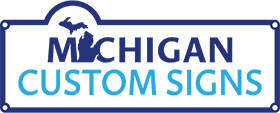Billboard advertising has painted the skies of our cities for decades, serving as a canvas for brands to capture the imagination of passersby. As digital technology sweeps across industries, the world of billboard advertising is no exception. Today, businesses face a choice: embrace the vibrant dynamism of digital billboards or stick with the steadfast reliability of static ones. For those looking to maximize their return on investment (ROI), understanding the nuances of each option is key.
Digital Billboards: The Canvas of the Future
Imagine a billboard that changes with the times, adapting its message to the moment. Digital billboards have transformed the advertising landscape with their ability to display multiple messages in a single location. This flexibility is a game-changer for campaigns that thrive on real-time updates and dynamic content.
The Bright Side of Digital Billboards
- Dynamic Storytelling: With the power to change content swiftly, digital billboards keep your message fresh and relevant.
- Captivating Displays: Their vibrant visuals are designed to catch the eye and hold attention.
- Precision Targeting: Tailor your message to different audiences at different times of the day.
The Flip Side
- Investment Costs: The technology and maintenance of digital billboards can be pricey.
- Technical Hiccups: Like any tech, they can face malfunctions or downtime.
Static Billboards: The Timeless Classic
In a world of constant change, there’s something comforting about the permanence of static billboards. Their simplicity and cost-effectiveness make them a favorite for businesses focused on long-term brand awareness.
The Strengths of Static Billboards
- Budget-Friendly: Generally more affordable than their digital counterparts.
- Simplicity at Its Best: No need for digital content creation or management.
- Enduring Presence: A constant reminder of your brand over time.
The Limitations
- Inflexibility: Once up, the message remains until physically altered.
- Engagement Challenges: May not be as attention-grabbing as digital displays.
Weighing Costs Against Returns
When it comes to billboard advertising cost, it’s not just about the initial outlay. Digital billboards, with their higher upfront costs, can offer a greater ROI through enhanced engagement and adaptability. Meanwhile, static billboards, with their lower costs, provide a steady ROI, particularly for brands focused on maintaining a long-term presence. For more on how to leverage these advertising options, visit our Billboard Advertising Solutions page.
Gauging the Impact
To truly grasp billboard advertising effectiveness, businesses must delve into key performance indicators (KPIs) like reach, engagement, and conversion rates. Digital billboards shine with their data analytics capabilities, while static billboards rely on traditional metrics such as traffic counts and demographic insights.
Crafting Your Billboard Strategy
The choice between digital and static billboards hinges on your budget, campaign objectives, and target audience. For those seeking high-impact, dynamic advertising, digital billboards are a compelling choice. Conversely, if cost-effectiveness and enduring brand presence are your priorities, static billboards offer a solid path.
The Art of Maximizing ROI
In the end, the decision between digital and static billboard advertising should align with your marketing strategy and financial plan. By weighing the pros and cons of each option and analyzing billboard advertising ROI, businesses can make informed choices that enhance their advertising impact and drive success.
Blending both digital and static billboards into a cohesive marketing strategy can offer the best of both worlds, ensuring your brand message resonates with the right audience at the right time.

